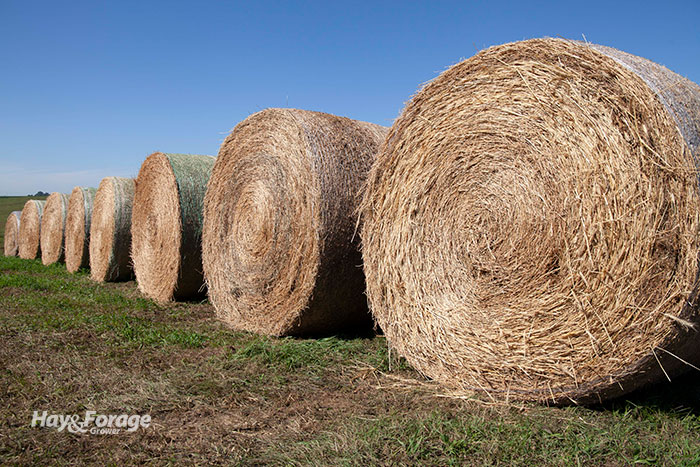
Dry conditions in 2020 are impacting a much larger swath of the U.S. than was the case last year. A quick look at the Drought Monitor verifies this fact.
With drought conditions also comes feed shortages and, often, these deficiencies persist through winter. As such, now is a good time to assess forage inventories.
“Conducting an inventory now will give producers a good idea of possible deficiencies and allow time to develop the best options for the upcoming feeding season,” says Janna Block, extension livestock systems specialist based at North Dakota State University’s Hettinger Research Extension Center.
Block says to begin by getting an accurate count or measurement of bales and other harvested forages such as silage. Unless bale weights are already known, weigh representative bales for each type of hay harvested to get an accurate assessment of the total tons of hay available for feeding.
Know your dry matter
Bale weight is only one piece of the puzzle; it’s also important to know the dry matter content.
“Livestock nutrient requirements are calculated on a dry matter basis to eliminate the dilution factor from water,” Block explains. “Knowing the moisture content of forages is important because moisture affects weight but does not provide nutrients to the animal. Although water is required, needs should be met through actual water sources,” she adds.
There are several options for determining the dry content of forages. It can be determined by using a Koster moisture tester, microwave oven, food dehydrator, or by submitting a sample to a commercial laboratory for analysis.
If the dry matter content of bales is unknown, Block suggests using an estimate of 85% to 90% for the initial inventory estimate; however, she strongly suggests using a laboratory analysis for ration balancing.
Count the critters
The next step is to estimate potential feed needs.
“A variety of factors influence how much forage a cow will eat every day,” Block says. “In addition to forage quality, body weight, stage of production, and environmental factors will all play a key role.”
Block suggests writing down the number and estimated weight for each class of livestock (mature cows, bulls, heifers, yearlings, calves, and so forth) to be fed this winter. Although actual intake will vary, an estimate of 2.5% of body weight can be used to determine dry matter forage requirements of each animal per day.
Block offers this example:

If bales weigh 1,400 pounds apiece and contain 88% dry matter, each bale would supply 1,232 pounds of dry matter (1,400 pounds x 0.88). For this example, this means that about six bales would be required to meet feed needs for each day.
Wait . . . there’s more
For a feeding period of 210 days, a total of 1,260 bales would be needed. However, dry matter losses and waste also need to be considered.
If the bales are stored outside, dry matter losses can be as high as 20%. If stored inside, losses will likely drop to about 7%, according to Block.
“Feeding losses also vary depending on the feeding system,” the livestock specialist says. “When hay is fed in bunks, waste may be as low as 3% to 14%. If bales are rolled out on the ground, losses due to trampling and overconsumption could be as high as 45%, particularly when cattle are fed for multiple days at one time.”
When animals are offered free choice access to large quantities of forage, intake typically will increase by 15% to 20% beyond what is needed to meet requirements.
“Where possible, daily feeding helps force cattle to eat hay that might otherwise be wasted,” Block says. “If hay costs $85 a ton and waste could be reduced 25% by covering the hay and feeding on a daily basis, this would result in savings of more than $20 per ton,” she adds.
Assuming an overall loss of 15% using the above example, an additional 189 bales may be needed for the feeding period. “Including this waste factor helps ensure that forage supplies will be adequate,” Block suggests.
The above estimate of feed needs does not consider differences in forage quality or the specific nutrient requirements of cattle.
“Completing this process will help identify a potential forage shortage; however, actual amounts of forage and possibly supplement to be fed need to be determined by utilizing laboratory analysis of forage and developing a balanced ration,” Block concludes.

